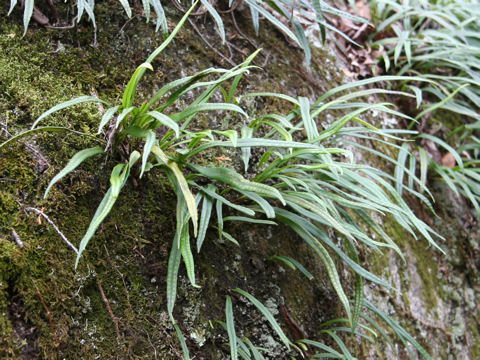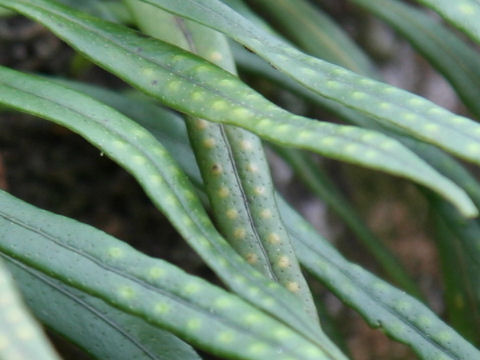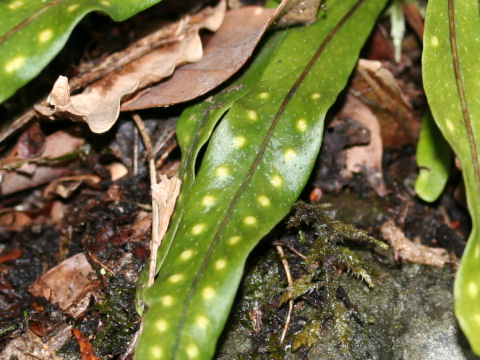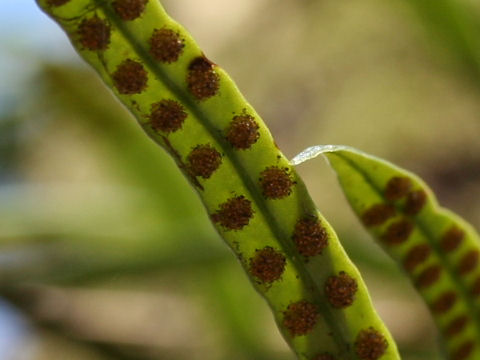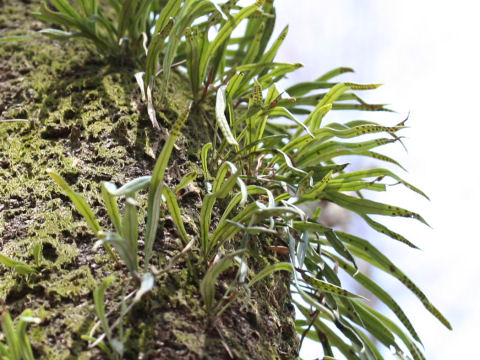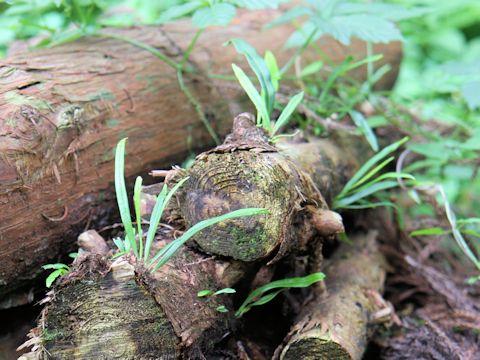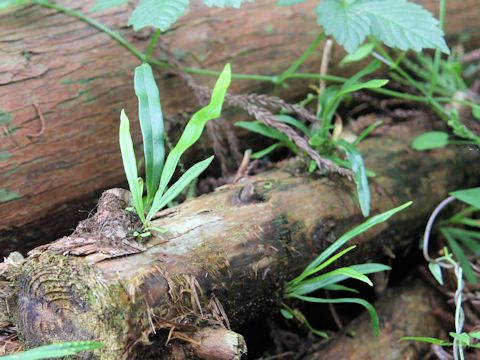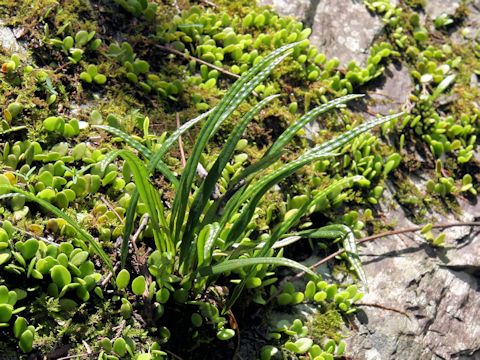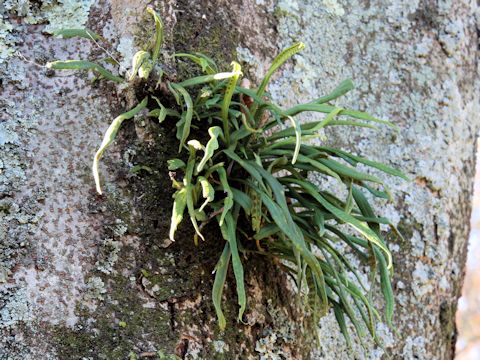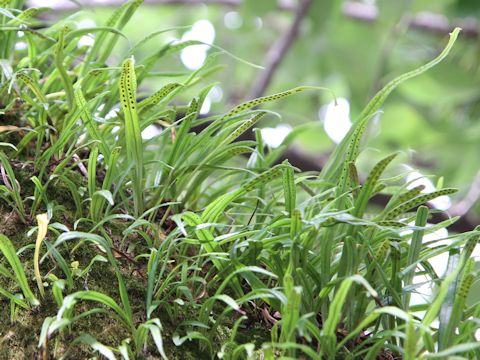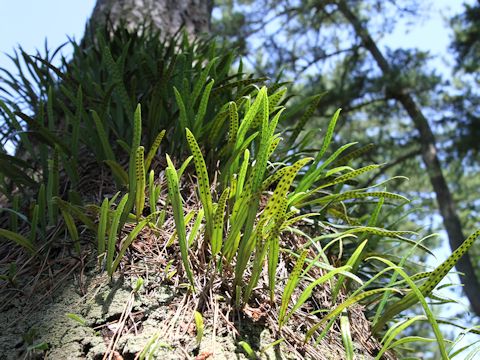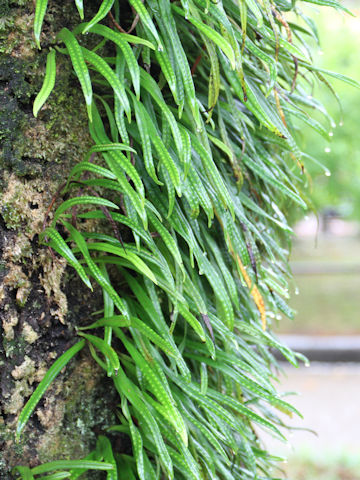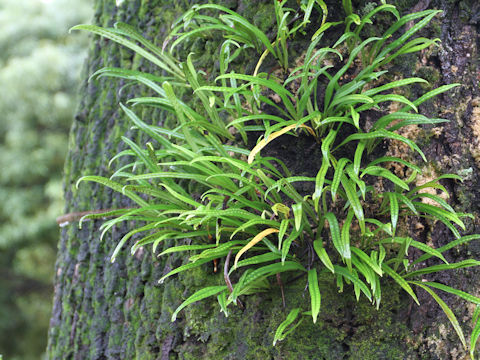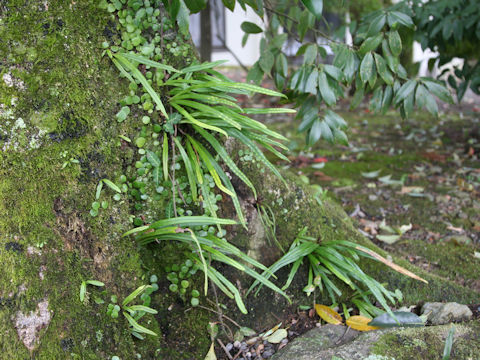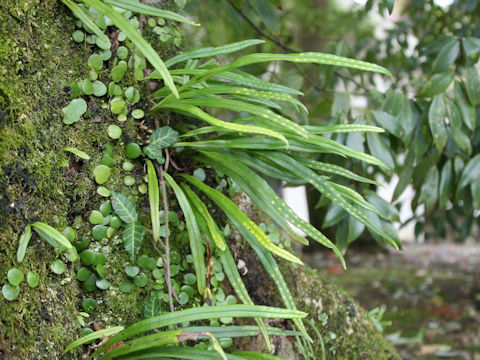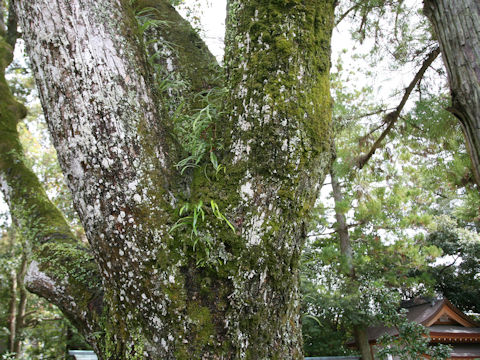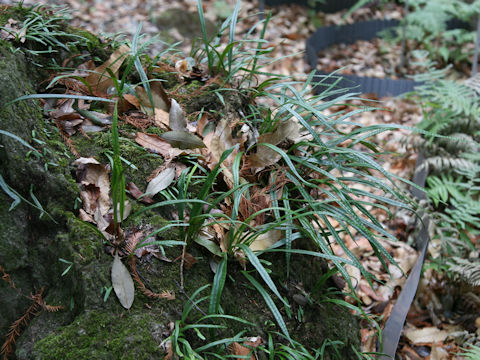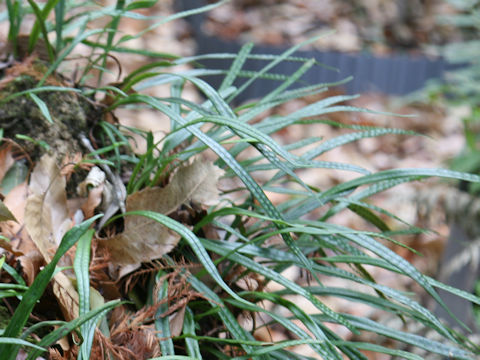
|
|
|
|
−− もっと見る(Show more)−−
−− 閉じる(Close) −−
|
|
|
|
わが国の各地をはじめ、台湾や朝鮮半島、中国、ヒマラヤに分布しています。樹木の幹や岩上、石垣などに着生します。葉は根茎から出て、長さは10〜20センチくらいになります。葉の裏面には、円形の胞子嚢が並びます。和名の由来は、環境適応力があり、民家の軒先にも生えるということから。台湾華語では「瓦葦」、中国語では「瓦韋(wa wei)」と呼ばれます。 |
|
|
ウラボシ科ノキシノブ属のシダ植物で、学名は Lepisorus thunbergianus。英名はありません。 |
|
|
The "Noki-shinobu" (Lepisorus hunbergianus) belongs to the family Polypodiaceae. It is an evergreen fern that is distributed throughout Japan, as well as Taiwan, the Korean Peninsula, China and the Himalayas. This fern grows on tree trunks, rocks and stone walls. The leaves are borne at the rhizomes, and can reach 10-20 cm long. The round sori are arranged on the abaxial sides. The Japanese name comes from the fact that it is adaptable to its environment and can even grow under the eaves of houses. In Taiwanese, it is called "瓦葦", and in Chinese, it is called "瓦韋" (wa wei). |
|
|
[上] 大阪府交野市「大阪市大付属植物園」にて、2003年09月14日撮影。 [中1・中2] 愛知県豊田市市場町「緑の公園」にて、2006年11月16日撮影。 [中3] 静岡県芝川町内房にて、2006年02月27日撮影。 [中4・中5] 長野県駒ヶ根市赤穂「養命酒健康の森」にて、2006年04月04日撮影。 [中6・中7] 千葉県香取市仁良にて、2012年06月21日撮影。 [中8] 三重県松阪市「波瀬植物園」にて、2012年07月09日撮影。 [中9] 茨城県高萩市「高萩市森林公園」にて、2012年12月09日撮影。 [中10・中11] 静岡県三島市「三嶋大社」にて、2013年08月03日撮影。 [中12] 茨城県北茨城市「五浦海岸」にて、2014年08月02日撮影。 [中13・中14] 福岡市中央区「福岡市植物園」にて、2017年10月06日撮影。 [中15・中16] 三重県伊勢市豊川町「伊勢神宮外宮」にて、2022年03月19日撮影。 [中17] 三重県伊勢市宇治浦田「猿田彦神社」にて、2022年03月19日撮影。 [中18・下] 茨城県つくば市「つくば実験植物園」にて、2025年01月25日撮影。 |

|
|
Shu Suehiro |

